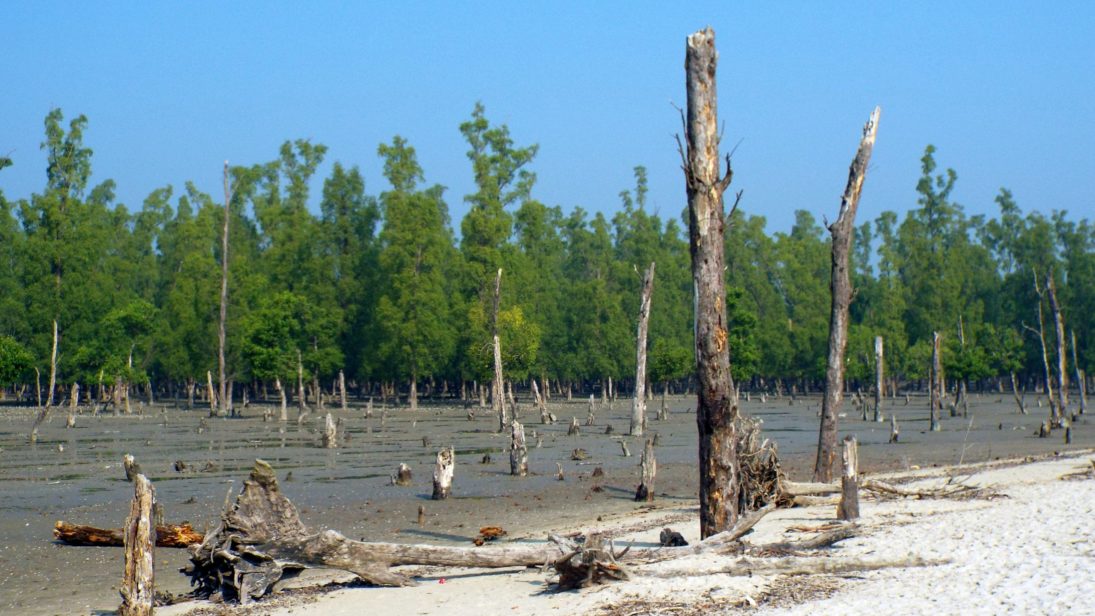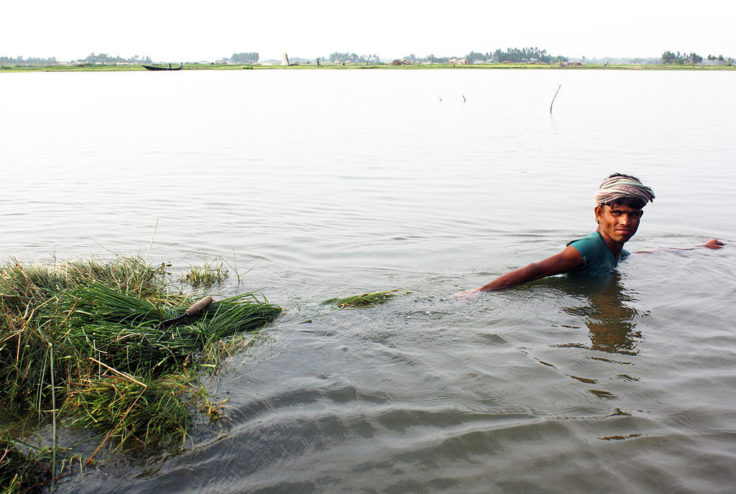
As Bangladesh recovers from the second mega cyclone of the year, following Cyclone Fani in May, the impacts of climate change have never been more prominent. On November 9, Cyclone Bulbul razed parts of Bangladesh and India, with early reporting stating 24 have been killed and around 10,000 households destroyed. While the 2019 cyclones have caused nowhere close to the devastation of Cyclone Sidr in 2007, which resulted in at least 15,000 fatalities largely due to improved resilience efforts, the collateral damage of Cyclone Bulbul is still significant with over 250,000 hectares of croplands destroyed and counting. Climate change is not a fantastical doomsday prediction anymore; it is a fact – a phenomenon that has multifarious security implications across the globe.
Bangladesh is one of the most vulnerable nations to climate change, ranking seventh among the most severely affected countries globally. Climate change has already impacted several non-traditional security areas including food, water, health, and migration in Bangladesh.
While it is difficult to establish a causal relation between climate change and rising conflicts, a host of recent events do support the concomitant impact of climate change on conflicts in developing and low-lying regions like Bangladesh. Bangladesh is one of the most vulnerable nations to climate change, ranking seventh among the most severely affected countries globally. Climate change has already impacted several non-traditional security areas including food, water, health, and migration in Bangladesh. As these impacts worsen, Bangladesh’s security risks suffering through a chain of cross-cutting events including poverty, malnutrition, resource scarcity, petty crimes, ethnic conflicts, and terrorism.
Risks to Quality of Life
Climate change poses several non-traditional security challenges to Bangladesh through nutrition, health, and migration risks. Around 40 percent of the country’s labor force is engaged in the agricultural sector, producing 13 percent of its Gross Domestic Product (GDP). Already prone to natural disasters, climate change’s impact on severe and frequent calamities makes Bangladesh susceptible to falling short of its food grain requirements to feed its massive 170 million people. In 2017, flash flooding in Bangladesh destroyed or partially damaged more than 560,000 hectares of its land. Despite advancements in food production, around 40 million people in Bangladesh are considered food insecure and, to make matters worse, increased salinity in ground water owing to sea level rise has caused water shortages and contamination.
In terms of health hazards, Bangladesh faced its worst dengue outbreak in 2019, hitting a record-high of nearly 30,000 infections. This outbreak has been attributed to rise in temperatures and rainfall, exacerbated by climate change, that have made the country a favorable breeding ground for the dengue-carrying Aedes Aegypti mosquitoes. Climate change is also expected to increase incidence of diseases such as cholera, cardiovascular and respiratory diseases, as well as malnutrition due to food insecurity, placing people with already weakened immune systems especially at risk. The link between climate change and spread of infectious disease risks significantly undoing the country’s successes in tackling such virulent diseases.
Furthermore, climate change in Bangladesh also affects internal migration. The capital, Dhaka, houses over 20 million people today, making it the most densely populated city in the world. Climate change-induced natural disasters and fresh water shortages are major factors driving low-income rural populations to turn to the city to make their livelihood – with nearly 700,000 Bangladeshis annually displaced during the last decade and by some predictions up to 13.3 million to be internally displaced by 2050. Together, the rising frequency of natural disasters, sea-level rise, river erosion, and salinity increase in water have permanently changed the lives of many Bangladeshis, forcing rural populations to move to already dense urban areas. The consequent pressure puts significant strain on the quality of urban life through increased pollution, food, water, and energy shortage, waste-disposal problems, spread of communicable diseases, social discord, and risk of crimes and conflict.

Role of Climate Change in Exacerbating Conflict
As availability of arable lands continues to shrink, the fight over limited resources threatens the festering of conflict within Bangladeshi society. While climate change has not been directly linked to conflict, it has been termed a “threat multiplier” that may exacerbate existing discord over natural resources. Recent studies have also pointed to a potential link between resource scarcity and an increase in conflict in rural Bangladesh. The resource-rich Chittagong Hill Tracts, which is home to about half a million indigenous citizens, has been a hotbed of ethnic conflict over the last two decades, clashes occurring frequently. In other areas, attacks on religious minorities such as “Santals” have been motivated by land disputes. In Cox’s Bazar city, which hosts over 1.1 million Rohingya refugees, issues such as inflation, traffic congestion, wage slump, and environmental degradation are creating simmering discontent among local communities, which may easily boil into conflict. While the Rohingya crisis is not climate-induced, it serves as an exemplar of the possible ramifications of a sudden increase in population—which may be increasingly driven by climate change.
[Climate change] has been termed a “threat multiplier” that may exacerbate existing discord over natural resources. Recent studies have also pointed to a potential link between resource scarcity and an increase in conflict in rural Bangladesh.
Furthermore, densely populated areas, such as urban slums which lack basic social security facilities, can easily become a breeding ground for petty criminals and radicalization. While not historically a hotbed of terrorism, Bangladesh has seen its fair share of terrorist incidents since 2000, with poverty and resource deprivation being key drivers of radicalization. Bangladesh has seen deadly attacks orchestrated by terror groups such as Jamaat-ul-Mujahideen, al-Qaeda in the Indian Subcontinent, and the Islamic State at political rallies, cinema halls, New Year celebrations, cafes, etc. Even though direct links between climate change and terrorism are yet to be established, factors such as frustration and social disconnection – which may be exacerbated by loss of livelihoods linked to climate change – have been thought to contribute to radicalization in Bangladesh in the past.
Advancing the Fight
While Bangladesh has done well in climate change adaption through significant improvements in natural disaster response mechanisms, more work and funding is required to mitigate climate risks. Bangladesh is set to reduce its greenhouse gas emissions by only five percent by 2030 if it does not receive financing and technology from the international community. Out of the approved around USD $5 billion from the International Green Climate Fund, Bangladesh has received a mere USD $85 million in three projects – the dearth primarily owing to the onerous accreditation process for receiving funds. Beyond this, local Bangladeshi funds continuously face hurdles due to misallocation of resources, lack of transparency, and bureaucracy.
Unless preempted, climate change is expected to lower the country’s real GDP by around 4.3 percent by 2030, which is unfortunate considering that it is developed countries that have been responsible for most carbon emissions historically. A combination of extreme weather events and subsequent natural disasters risk diminishing access to clean water and nutritious food, afflicting Bangladesh’s most vulnerable. In addition, climate migration is likely to increase the risk of conflict and radicalization in already dense regions of Bangladesh. As low-lying developing regions like Bangladesh stand to suffer the most in the world from climate change, developed economies need to take a more solicitous headline role in coming up with solutions to mitigate the impending impacts. Otherwise, Bangladesh will be helplessly resigned to what has been termed “the greatest threat to human history in a thousand years.”
Editor’s Note: Scholars are increasingly paying attention to the security impacts of climate change, however, this nexus remains relatively understudied, particularly in South Asia. Climate change-induced events may cause large-scale migration and impact the availability of resources, which in turn could stir
***
Image 1: Gordon Tour via Flickr
Image 2: Wikimedia Commons


